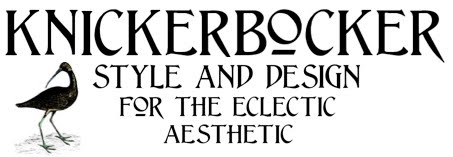
This pastoral complex of quintessential Bucks county fieldstone buildings makes up the historic Burgess Lea Farm. Built in the 18th century by Isaiah Paxson, a gentleman farmer, businessman, and partner in the company that built the bridge across the river in 1814 giving Centre Bridge its name. The farm is remarkably well preserved due to the fact that only two families owned it until 1978.

The large window on this stately stone Georgian once illuminated the studio of Edward Willis Redfield, the American Impressionist painter often credited with co-founding the New Hope Art Colony, as the group of artists who came to live and work along the river came to be known, when he moved to this house in 1898.

Redfield’s most famous work "The Burning of Center Bridge" was painted from memory to depict the dramatic night in 1923 when Isaiah Paxson’s original 112-year old wooden covered bridge was struck by lightening.

The rebuilt bridge as seen today connecting the village to the quaint town of Stockton, New Jersey, where the Stockton Inn immortalized in song by Broadway composers Rogers and Hart in the 1930’s was so popular with writers like F. Scott Fitzgerald their table was nicknamed the Algonquin Round Table after their famed New York City haunt.

Just north of the Redfield house an elegant formal garden guarded by lions lies along the canal.

Peaking out from the vegetation are the unmistakable salmon stucco walls and red tile roof of a 1920’s Mediterranean villa, a type more commonly associated with locales like Beverly Hills or Palm Beach than the banks of the Delaware River.

This is Playwicky, the Morris L. Cooke house designed in the 1920’s by renowned architect William Lawrence Bottomley. Cooke, who was appointed director of the Rural Electrification Administration by FDR, built the house for weekends in the country.

Topped by a picturesque combination chimney bell tower, the house also boasts the work of the master blacksmith Samuel Yellin.

One of the most charming features of this unique property has to be this delightful two-story octagonal garden tower retreat. Such fairy tale details make it easy to understand House and Garden’s description of Playwicki as the “playhouse of two traveled grownups”.

Next door to one unusual Jazz Age villa is oddly enough an even grander one. The Frederick L. Miller house was also designed in the 1920’s by Bottomley. A 1929 House and Garden article aptly titled “The House By The Canal” declared “Some of yesterday’s architecture and some from foreign lands are found in this country house…set against a background of woods, in a meadow through which flow the quiet waters of an old canal.”

Like something to be found along the shores of Lake Como, the house has been expanded and altered from its original design. Three sets of French doors for example now line the terrace where once a huge Palladian window added a curvilinear focal point to this long wing.

A 1926 photo of the nearly 40 foot long drawing room taken shortly after completion shows the original Palladian window looking out to the river. The large space was simply furnished with informal wicker and a comfortable upholstered wing chair and rolled arm sofa that speak to the casual country house vibe.

A 1927 image from The House Beautiful shows Bottomley’s original entrance before renovations. The simple arched doorway surmounted by a charmingly canopied wrought iron balcony was in keeping with the Italian farmhouse vernacular the architect originally intended. What look to be fruit trees planted close to the house again speak to the rustic farmhouse sensibility the estate once had.

The main façade is now far grander with a monumental entrance lording over a massive gravel forecourt transforming Bottomley’s Italian country farmhouse into an imposing mansion. While quiet a beautiful showplace one can’t help but wonder if a future owner might restore some of architects’ original scheme.

Flat-bottomed canal boats wait under the bridge behind the Centre Bridge Inn; an Inn has operated at this site for over two hundred years.

A cathedral-like alley of trees leading down to the river dramatically frames this elegant antique house of stucco over stone.

Tucked on the hillside just behind the white stucco house is this interesting structure with a huge multi-paned window that was no doubt once the studio of another local artist.

A classic Pennsylvania fieldstone farmhouse comfortably sited in a large clearing in the woods.

Yet another beautifully restored antique stone manor, this time situated on a tiny sliver of land between the canal and River Road. A tall trellis fence gives the place an air of mystery while lending privacy to the small but lavish garden.

At one end of the narrow garden sits this quaint slate roofed shed topped with a charming metal flower finial.

The American impressionist landscape painter William Langson Lathrop founded the New Hope Art Colony when he moved to this house at Phillips Mill in 1899. The early years of the twentieth century saw a cache of like-minded artists known as the Pennsylvania Impressionists flocking to join Lathrop and Redfield in capturing the local landscapes.

The Tow Path as painted by Lathrop who kept a boat to shuttle students along the canal from New Hope to his studio at Philips Mill.

Of course even with all the history and architecture to savor it’s impossible to stroll along the Delaware and not stop to appreciate the wonders of nature around you.
Photos 1-3, 5-11, 15-21, and 23 by KS&D.
Photo 12 via Library of Congress.
Photo 13 from The House Beautiful.
Photo 14 via Zillow more photos here.




















